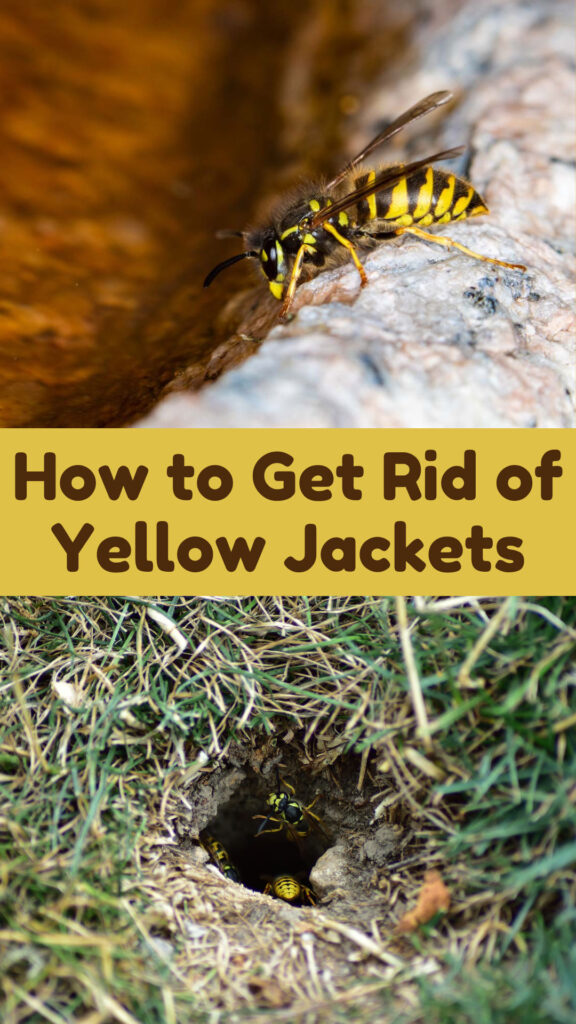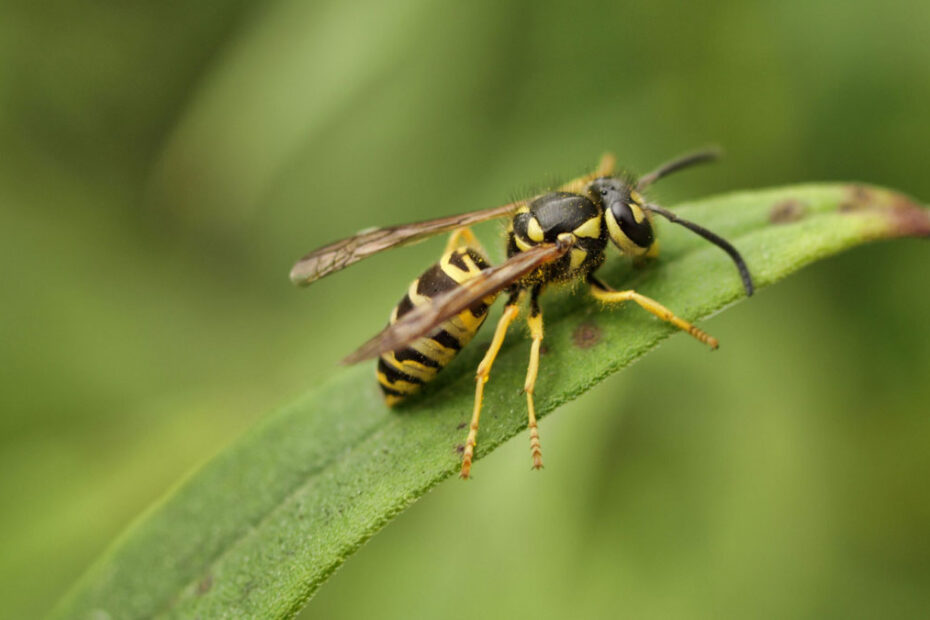Yellow jackets can turn your peaceful backyard into a danger zone. These aggressive wasps are notorious for their painful stings and relentless behavior, especially when they feel their nest is threatened. If you’re dealing with an infestation, you’re probably eager to find effective ways to get rid of them.
Understanding how to safely and efficiently eliminate yellow jackets is crucial for reclaiming your outdoor space. From identifying their nests to using the right tools and techniques, you’ll need a solid plan. In this guide, we’ll walk you through the steps to ensure your home and yard are free from these unwelcome guests.
Key Takeaways
- Yellow Jacket Identification: Yellow jackets are black and yellow wasps with distinct markings, known for their aggressive behavior and painful stings, especially in late summer and early fall.
- Nest Identification: Yellow jackets build aerial and underground nests in locations such as eaves, trees, bushes, and abandoned burrows. Increased wasp activity can indicate nearby nests.
- Prevention Measures: Prevent infestations by sealing entry points in buildings, using natural repellents like essential oils, and placing deterrent plants such as mint and citronella around your yard.
- Safe Removal Techniques: Wear protective gear and use appropriate methods like insecticidal sprays and traps. For larger infestations, itâs advisable to hire professional extermination services.
- Post-Removal Steps: Clean the nest area thoroughly, set traps, apply residual pesticides, and consider regular inspections by professionals to prevent yellow jackets from returning.

Understanding Yellow Jackets
Yellow jackets can be a significant nuisance, especially during late summer and early fall. These aggressive wasps are not just a threat due to their painful stings but also because they can quickly dominate outdoor spaces. Grasping their behavior and characteristics is paramount to safely managing and eliminating them from your environment.
Key Characteristics
Appearance
Yellow jackets are typically black and yellow with clearly defined markings. They have a sleek, narrow waist and can reach up to 0.5 inches in length.
Behavior
Yellow jackets are highly aggressive when disturbed. Unlike bees, they can sting multiple times, injecting venom with each sting, which causes severe pain and potential allergic reactions.
Diet
These wasps are scavengers, feeding on meats, sweets, and other insects. Their attraction to human food makes them a common sight at picnics and outdoor gatherings.
Habitat
Nesting Sites
Yellow jackets build their nests in both ground and aerial locations. Common nesting sites include:
- Underground burrows
- Wall voids
- Eaves of buildings
- Bushes or trees
Seasonal Activity
Activity peaks in late summer and early fall. During this period, colonies can grow significantly, and food sources become more crucial for them.
Identifying Yellow Jacket Nests
To effectively eliminate yellow jackets, identifying their nests is crucial. Key indicators of nest locations include:
- Increased wasp activity in a particular area
- Visible entrances to underground nests
- Paper-like material used for aerial nests
Action Points
Understanding yellow jackets’ appearance and behavior helps you mitigate risks associated with their presence. If you notice increased yellow jacket activity near your home or yard, take appropriate steps to locate and address their nests.
Identifying Yellow Jacket Nests
Spotting yellow jacket nests early helps you address infestations effectively. Understand different nest types and where they commonly appear to manage yellow jackets successfully.
Types Of Nests
Yellow jackets build two primary types of nests:
- Aerial Nests: These nests hang from structures like eaves, tree branches, or shrubs. They resemble paper mache balls and can grow up to the size of a basketball.
- Underground Nests: These nests, often found in abandoned rodent burrows, are concealed beneath the soil. You might see a small entrance hole with increased wasp activity around it.
Common Nest Locations
Yellow jackets prefer specific spots for their nests. Knowing these can help you identify and address nest sites:
- Underground: Look for nests in abandoned burrows, compost piles, or areas with loose soil.
- Trees and Shrubs: Check mid to low branches for aerial nests.
- Building Structures: Inspect eaves, attics, and wall voids for signs of nesting.
- Garbage Sites: Around trash cans and recycling bins, where yellow jackets might be scavenging for food.
Watch for increased wasp activity around these areas to spot nests before they become a bigger problem.
Preventative Measures
Preventing yellow jackets from nesting around your home limits their population and reduces the risk of painful stings. Carry out these measures to create a safer environment.
Sealing Entry Points
Yellow jackets often find entry points in buildings where they can establish nests. By sealing these entry points, you can significantly lower the chance of an infestation.
- Inspect Exterior Walls: Check for cracks, holes, and gaps in walls, especially around windows, doors, and utility pipes.
- Seal Openings: Use caulk or expandable foam to fill in any gaps or holes you find. Pay special attention to areas around eaves and rooflines.
- Replace Damaged Screens: Ensure window and door screens are intact and repair any damaged screens to prevent yellow jackets from entering.
Sealing entry points will help you keep the yellow jackets outside where they belong.
Using Natural Repellents
Natural repellents act as deterrents, keeping yellow jackets at bay without harsh chemicals.
- Essential Oils: Mix essential oils like peppermint, lemongrass, and clove with water in a spray bottle. Spray the solution around high-activity areas.
- Plants: Planting certain types of plants, like mint or citronella, around your yard can naturally repel yellow jackets.
- Cucumber Peels: Place cucumber peels around likely nesting sites. Yellow jackets dislike the bitterness and will avoid these areas.
Using natural repellents provides a pest control method that’s safe for pets and children.
Safe Removal Techniques
Safety is paramount when dealing with yellow jackets. Following the right techniques ensures you can eradicate these pests effectively. Use the instructions below to take on this task confidently.
Protective Gear
Wearing protective gear is essential. Yellow jackets are aggressive and sting multiple times. Equip yourself with:
- Bee Suit: Full-body protection with a veil to safeguard your face.
- Gloves: Thick, long gloves to protect your hands and forearms.
- Boots: High, sturdy footwear to prevent stings on your feet and ankles.
Avoid wearing perfumes or brightly colored clothing, as these can attract yellow jackets.
DIY Methods
Direct methods can be effective if undertaken properly. Here’s how you can proceed:
- Locate the Nest: Identify the exact position during daylight, marking the nest but acting at night when yellow jackets are less active.
- Use Insecticidal Spray: Target the nest entry point with a commercial yellow jacket spray. Aim from a distance and apply generously.
- Dust Insecticide: If the nest is underground, use insecticide dust at the entrance. Repeat for a couple of days for full eradication.
- Trap Setting: Install yellow jacket traps around the nest using bait like fish or sugary substances to lure and trap them.
Only attempt these methods if the nest is small and easily accessible. Wear protective gear throughout the process.
Professional Extermination
While DIY methods can be effective, professional extermination offers a safer alternative, especially for large infestations. Expect the following from professional services:
- Inspection: Thorough examination to locate all nests and gauge the infestation level.
- Treatment Options: Use advanced chemicals and techniques to destroy the nests and prevent future infestations.
- Safety Protocols: Ensure the safety of your household, including pets and children, throughout the process.
- Follow-Up: Provide aftercare instructions and, if necessary, additional treatments to ensure complete elimination.
Contact professional extermination services when nests are in hard-to-reach areas or if you’ve experienced allergic reactions to stings.
By following these techniques, you can manage yellow jacket infestations safely and effectively, reclaiming your outdoor spaces.
Post-Removal Steps
After successfully removing yellow jackets from your property, it’s essential to take specific steps to ensure they don’t return and to maintain a safe environment. The following subheadings detail critical actions to carry out immediately following nest removal.
Cleaning The Area
Properly cleaning the area where the nest was located is vital. This step reduces the chances of attracting other pests or future yellow jacket colonies. Clean-up procedures include:
- Removing Nest Debris: Dispose of the nest and any remnants safely. Use a sealed plastic bag and place it in a covered trash bin.
- Disinfecting: Clean the area with soapy water or a disinfectant. This helps eliminate pheromones that can attract other yellow jackets.
- Clearing Nearby Vegetation: Trim overgrown plants and remove any piled leaves or debris that could provide new nesting sites.
- Regular Inspections: Check the areas around where the nest was removed and other potential nesting sites such as eaves, attics, and sheds.
- Setting Traps: Place traps in strategic locations around your yard to catch scouts and prevent new colonies from forming.
- Residual Pesticide Application: Apply a residual pesticide to potential nesting sites, focusing on entry points and concealed areas where yellow jackets might return.
- Calling Professionals For Re-Inspection: Consider having pest control professionals perform periodic inspections, especially in peak yellow jacket seasons like late summer and early fall.
Conclusion
Dealing with yellow jackets can be daunting, but with the right approach, you can reclaim your outdoor spaces safely and effectively. By understanding their behavior and identifying nests early, you’re better equipped to manage infestations. Remember to prioritize safety by using protective gear and considering professional help for larger nests. Carry out preventative measures to keep these pests at bay, ensuring a safer environment for you and your family. With consistent effort and vigilance, you can enjoy a yellow jacket-free yard all season long.
Frequently Asked Questions
What are yellow jackets?
Yellow jackets are aggressive wasps known for their black and yellow appearance, painful stings, and defensive behavior. They are scavengers often attracted to human food and typically seen in late summer and early fall.
How can I identify a yellow jacket nest?
Yellow jacket nests can be aerial or underground. Aerial nests hang from structures and look like paper mache balls, while underground nests are found in abandoned burrows. Look for increased wasp activity and visible nest entrances.
What are common nesting sites for yellow jackets?
Yellow jackets commonly nest in underground areas, trees, shrubs, building structures, and garbage sites. Their activity around these locations can help in spotting nests early.
What are the risks of yellow jacket stings?
Yellow jacket stings are painful and can cause allergic reactions in some individuals. Their aggressive nature means they can sting multiple times, posing a significant risk, especially if you disturb their nest.
How can I prevent yellow jackets from nesting around my home?
Prevent nesting by sealing entry points in buildings using caulk or expandable foam, and repairing damaged screens. Using natural repellents like essential oils, specific plants, and cucumber peels can also deter yellow jackets.
Is it safe to remove yellow jacket nests on my own?
DIY nest removal can be attempted for small, accessible nests using insecticidal sprays and traps. However, for larger infestations or hard-to-reach nests, it’s safer to contact professional extermination services.
What should I wear for safety when removing yellow jackets?
Wear protective gear, including a bee suit, gloves, and sturdy boots, to minimize the risk of stings when attempting nest removal on your own.
What are post-removal steps to prevent yellow jackets from returning?
Clean the area thoroughly, remove nest debris, disinfect the site to eliminate pheromones, and clear nearby vegetation. Regular inspections, setting traps, and applying residual pesticides can also help prevent their return.
Should I consider professional extermination services for yellow jacket infestations?
Yes, for larger or hard-to-reach nests, professional extermination services offer thorough inspections, advanced treatments, and safety protocols to ensure effective and safe removal of yellow jackets.
How do I identify an increased yellow jacket presence near my home?
Increased activity around common nesting sites, such as underground areas, building eaves, or garbage sites, indicates a higher yellow jacket presence and potential nests nearby.
